North Otter Creek Bridge
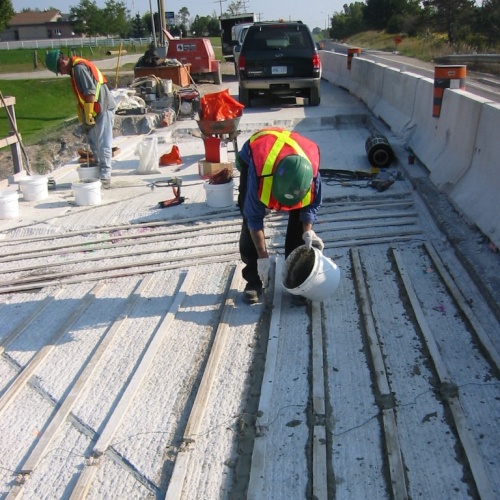
Our first active installation of the Galvashield® DAS product line was in 2003 on the North Otter Creek Bridge for the Ontario Ministry of Transportation (MTO). Since then, we have monitored its performance and aggregated that data into our models and designs. This project was also the first of any galvanic system embedded in concrete to meet the criteria of the NACE Cathodic Protection Standard.
The North Otter Creek Bridge is a rigid frame structure with a span length of 20m and a roadway width of 8.5m. The bridge was built in 1960 and was first rehabilitated in 1984 with the MTO's “first-generation” cathodic protection system. The cathodic protection system included an impressed current system consisting of high silicon cast iron anodes in a conductive – asphalt overlay.
The Problem
The bridge deck of the North Otter Creek Bridge was chloride-contaminated and required repair due to long-term exposure to deicing salts.
A condition survey conducted in 2000 found that the concrete deck (assessed using cores and sawn samples) was in good condition. The core samples extracted from the bridge deck confirmed that the reinforcing steel was also generally in good condition. The chloride ion content at the level of the mean cover depth (100 mm) was approximately four times the chloride level generally accepted as the threshold to initiate corrosion. The corrosion potential survey conducted indicated that approximately 88% of the concrete deck area had corrosion potential readings more negative than - 0.35v. The remainder of the readings were in the uncertain range (- 0.20 to - 0.35v). The findings of the condition survey confirmed that the cathodic protection system successfully extended the service life of the deck as evidenced by the good condition of the structure (i.e. no delaminations or other corrosion damage in the presence of high corrosion potentials and high chloride levels). However, the system had reached the end of its service life.
With experience gained through the applications of targeted galvanic anodes in patch repairs for corrosion prevention and drilled-in anodes for corrosion control of sound concrete with high corrosion potentials and chloride concentrations, the Ontario Ministry of Transportation (MTO), Ontario, Canada, and Vector Corrosion Technologies conducted a trial using distributed galvanic anodes in this bridge deck overlay to address the global corrosion issues in the structure on September 20, 2003.
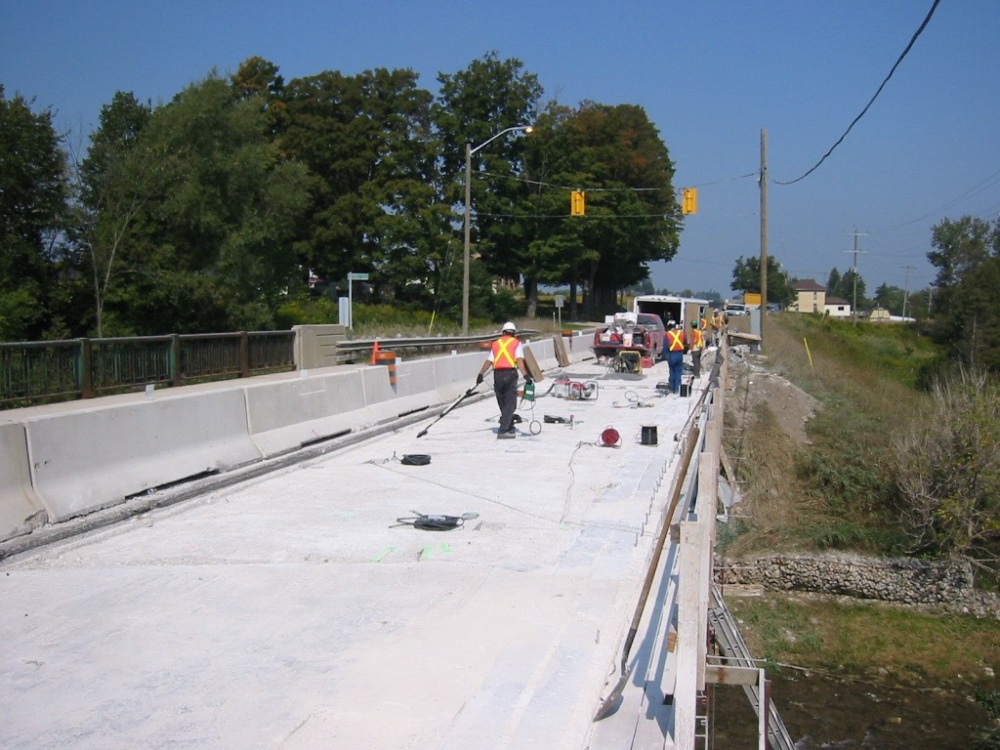
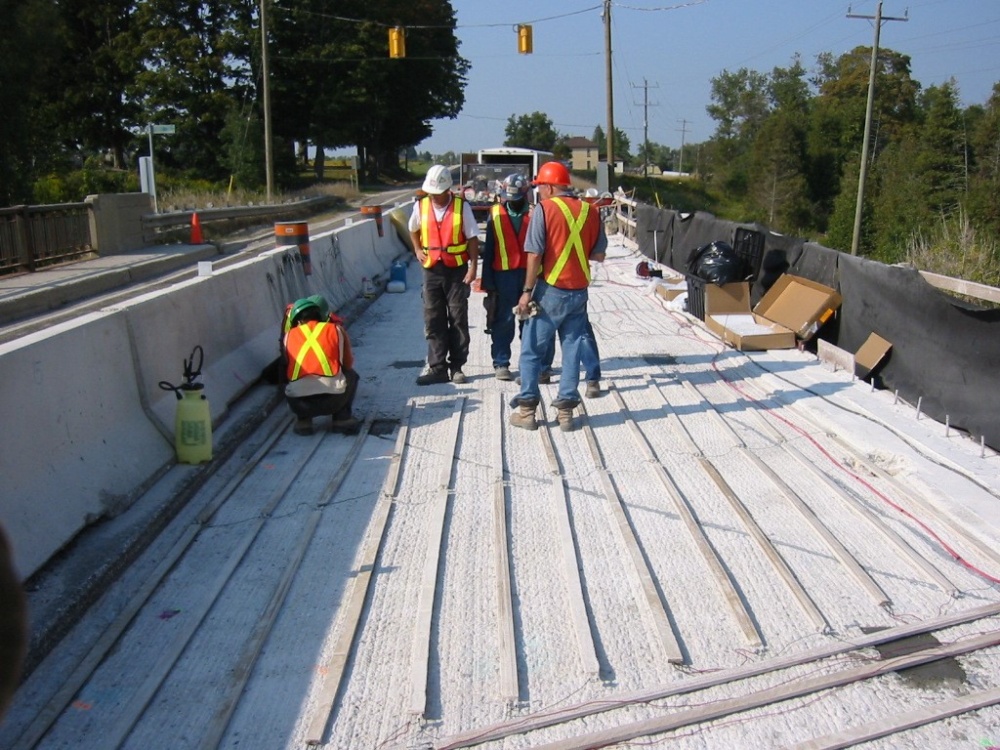
Our Solution
The bridge deck was prepared by milling off a portion of the existing concrete cover. Since most of the reinforcing steel would remain in chloride-contaminated concrete, a “distributed” galvanic CP overlay was installed.
The galvanic anodes consisted of a zinc core encased in a low-resistivity alkali-activated mortar shell and were prefabricated to fit the dimensions of the deck. A carbon fiber grid was installed over the anodes to reduce shrinkage cracking in the 2.5-in (60-mm) thick silica fume concrete deck overlay.
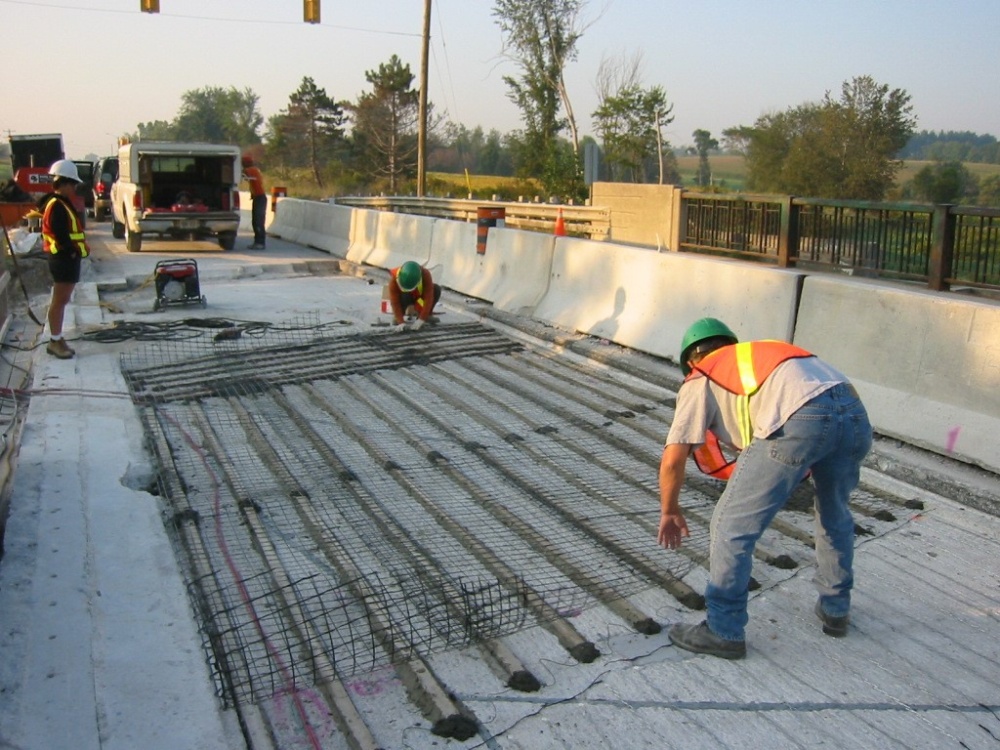
The Result
The bridge deck has been monitored since 2003 and remains in good physical condition.
Data provided in Table 1 confirms that the galvanic CP overlay is providing over 100 mV polarization and is meeting the NACE SP0216 galvanic CP standard criteria even though a bridge deck waterproofing system was installed on top of the silica fume concrete overlay, keeping the anodes in a relatively dry environment.
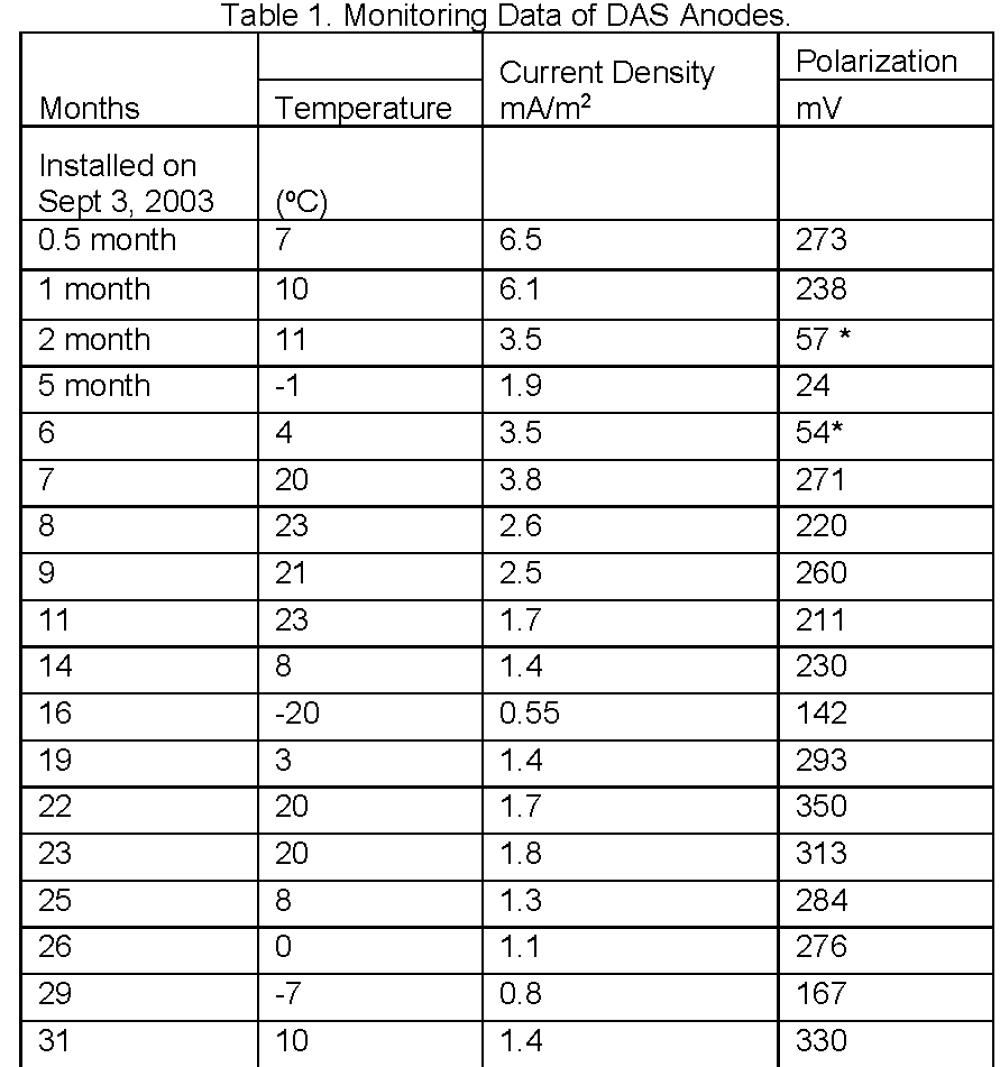
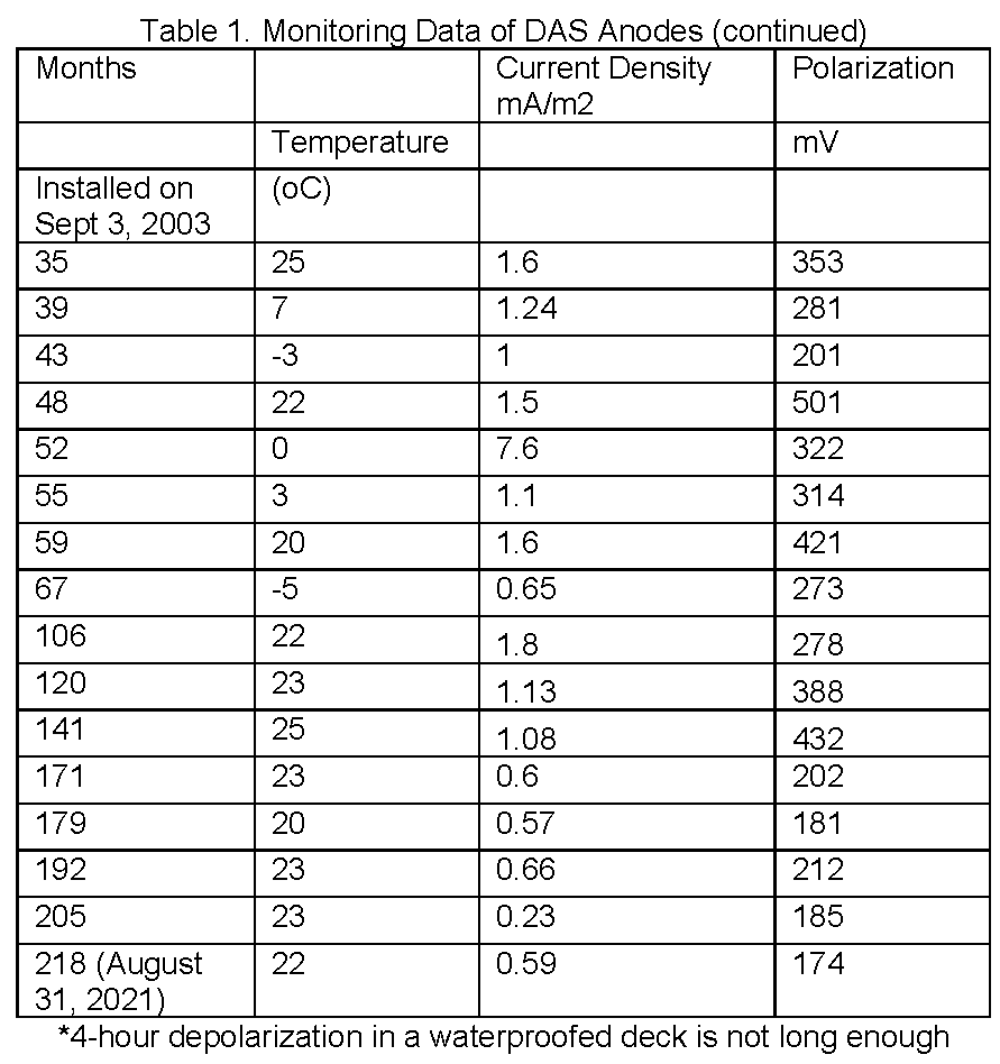
Technology Used
These innovative products and technologies were used on this project.